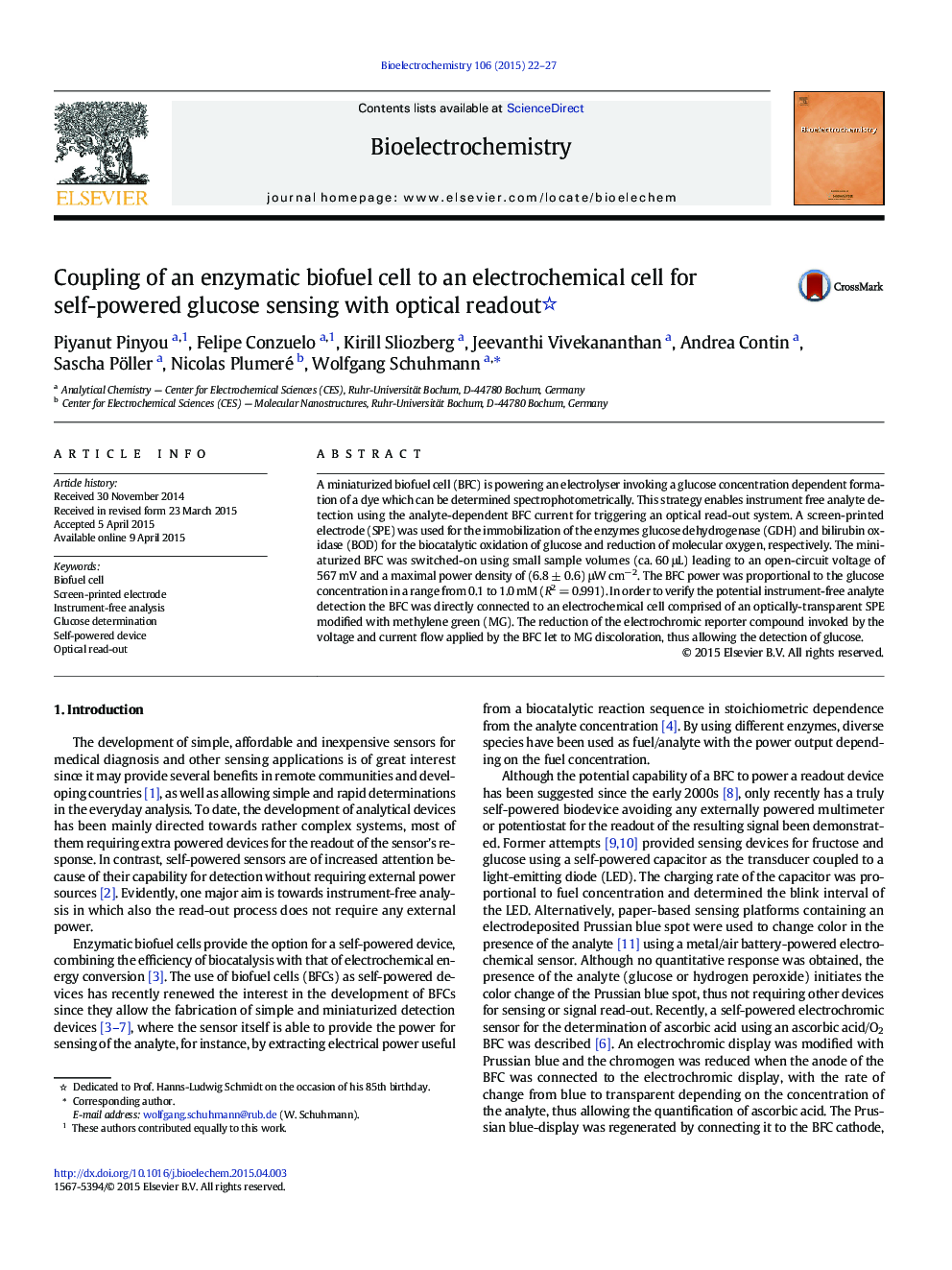| Article ID | Journal | Published Year | Pages | File Type |
|---|---|---|---|---|
| 1267856 | Bioelectrochemistry | 2015 | 6 Pages |
•A miniaturized biofuel cell (BFC) for glucose sensing is reported•Maximum power density obtained for the BFC of (6.8 ± 0.6) μW cm− 2 (n = 3)•Maximum power proportional to glucose concentration between 0.1 and 1.0 mM range•Self-powered detection of glucose in the concentration range between 0.1 and 0.6 mM
A miniaturized biofuel cell (BFC) is powering an electrolyser invoking a glucose concentration dependent formation of a dye which can be determined spectrophotometrically. This strategy enables instrument free analyte detection using the analyte-dependent BFC current for triggering an optical read-out system. A screen-printed electrode (SPE) was used for the immobilization of the enzymes glucose dehydrogenase (GDH) and bilirubin oxidase (BOD) for the biocatalytic oxidation of glucose and reduction of molecular oxygen, respectively. The miniaturized BFC was switched-on using small sample volumes (ca. 60 μL) leading to an open-circuit voltage of 567 mV and a maximal power density of (6.8 ± 0.6) μW cm− 2. The BFC power was proportional to the glucose concentration in a range from 0.1 to 1.0 mM (R2 = 0.991). In order to verify the potential instrument-free analyte detection the BFC was directly connected to an electrochemical cell comprised of an optically-transparent SPE modified with methylene green (MG). The reduction of the electrochromic reporter compound invoked by the voltage and current flow applied by the BFC let to MG discoloration, thus allowing the detection of glucose.
Graphical abstractFigure optionsDownload full-size imageDownload as PowerPoint slide
